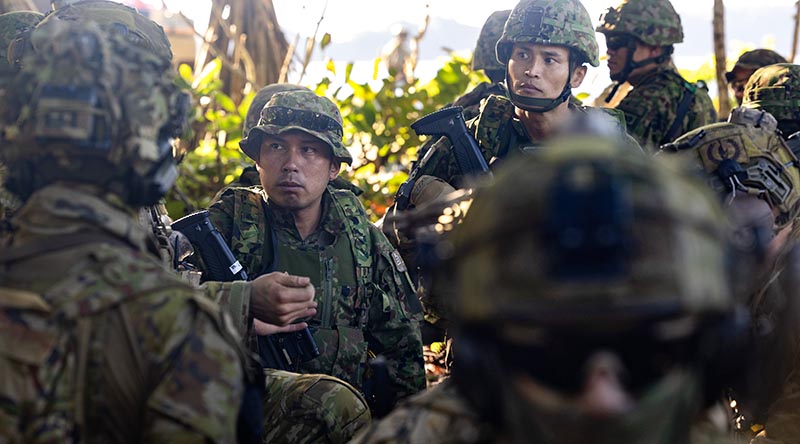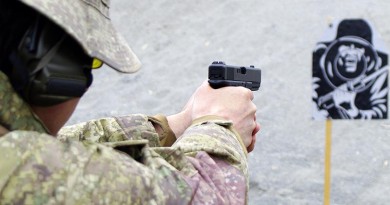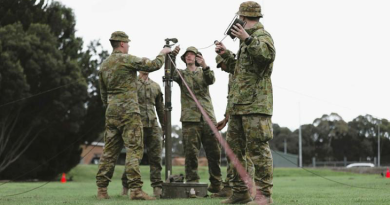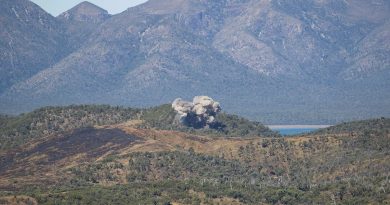Multinational integration during amphib landings

Over the last few days, the Australian Amphibious Force has completed significant Force Integration Training (FIT) and Wet and Dry Environmental Rehearsals (WADER) on Cowley Beach in North Queensland.
CAPTION: Japan Ground Self-Defense Force personnel attached to the Australian Amphibious Force – Amphibious Task Group 1 (ATG-1) receive a WADER briefing during Exercise Talisman Sabre 2025 in the Cowley Beach Training Area, Queensland. Photo by Leading Seaman Connor Morrison. Story by Lieutentant Tahlia Merigan.
Australian personnel worked with partners and allies from the Republic of Korea Navy and Marines, the Japan Ground Self-Defense Force, the French Armed Forces and the United States Marines Corps.
WADER involves the safe, but rapid transfer of personnel and equipment from HMA Ships Canberra and Choules and ROKS Marado, via a diverse range of landing craft to the shore, where they can secure a beach landing site and allow forces to push forward.
Over the three-day period, the force built a comprehensive battle plan, integrating doctrine and processes from the group of partners, to successfully deliver a battle group assault.
Commander Australian Amphibious Force, Captain Chris Doherty, RAN, reinforced the value of practising interoperability.
“The training brought together partner forces and demonstrated that we can integrate together and move onto more complex operations in Exercise Talisman Sabre 25,” Captain Doherty said.
His comments were echoed by Commander Landing Forces, Colonel Judd Finger.
“Amphibious Task group 1 (ATG 1) consists of over 30 separate units that came together in a very short period and demonstrated that Amphibious Task Group 1 is ready to proceed with more complex training,” Colonel Finger said.
One small, but essential unit conducting WADER is the Amphibious Beach Team (ABT), which controls the beach landing area to enable the landing of the Battle Group’s heavy and armoured Vehicles.
New Zealand Defence Force Lieutenant Gabby Williams and her team of five from the New Zealand Army’s 2nd Combat Service Support Battalion are currently embedded in the ABT.
“We’re integrating with the ABT to understand the standard operating procedures the ADF uses for beach insertion; taking our learnings back to New Zealand to better enable interoperability between our two nations in future,” Lieutenant Williams said.
“This will allow us in future exercises to operate with Australian amphibious forces with better tactical awareness, reducing the learning curve and allowing us to contribute faster and stronger.”
Though still early in the exercise, and with many days to go, Lieutenant Williams said her favourite part so far had been having her soldiers hit the beach with the ADF and getting high-end warfighting experience.
.
.

.
.





